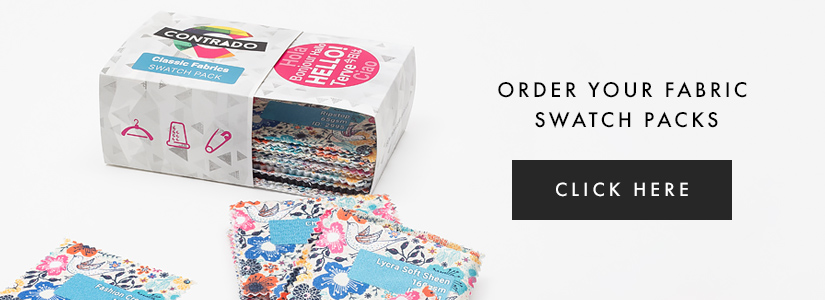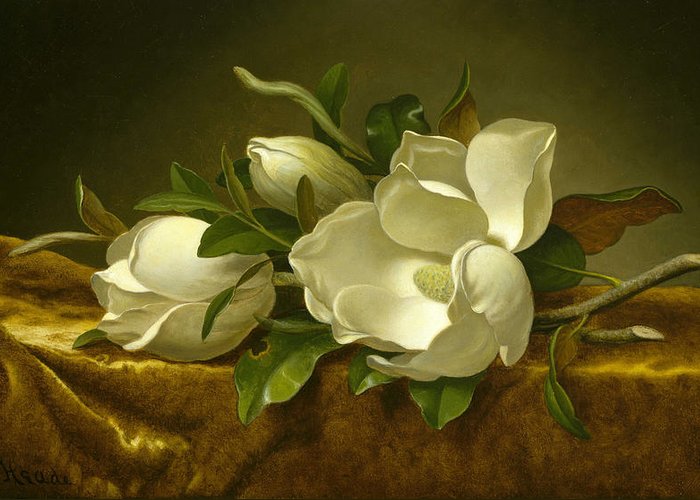Velvet: once the material embodiment of luxury, now relatively commonplace. How did society’s perception of velvet change so dramatically… and what makes velvet expensive or cheap? What is velvet made of? Are there different types of velvet?
Read on… and you’ll find out.
How Is Velvet Made? The Weaving Process
Velvet refers to a type of already-woven fabric, not a fibre. As a pile fabric, it consists of two layers of fibres woven into one final material.
There are two popular ways of weaving pile fabrics:
- Double Cloth Method
- Over-Wire Method
For both weaving processes, the threads are initally woven into loops. If creating plain velvet, the necessary tufts are then cut to make a basic pile. Finally, patterns are formed using various design methods, resulting in stylistic names for each branch of the material .
See Types of Velvet below for more information on patterns in pile.

What is Velvet: A Composition
There are two main forms of velvet that are created during the weaving process:
- Plain Velvet – refers to velvet that has the characteristic ‘furry’ hairs projecting from the front of the fabric.
- Voided Velvet – velvet that has its threads woven into the foundation layer, hidden from the front surface: these threads are looped and stick out from the back surface.
For our purposes, we will focus on plain velvet, the most basic form of the material. It is worth noting the nap in plain velvet: this refers to how the velvet feels rough in one direction (against the grain of fabric) and smooth in the other. This rough/smooth dichotomy in the material is important to consider during the cutting process, as colour is affected with the nap, not just texture (dark = rough / light = smooth). This changes the overall look of the finished velvet piece.
A Short History: Is Velvet Expensive?
The Ancient East
The earliest known forms of Velvet were used over 4000 years ago in Ancient Middle Eastern cultures: particularly Iraq and Egypt. These were mainly made from silk or linen and can be best described as pile weaves.
Velvet was also seen in Ancient China: pieces have been found dating back to 403 B.C (during the Warring States), although the material was more prevalent in society post 221 B.C. (during the Qin and Western Han dynasties). The type of velvet created in this time seemed to largely consist of low, untrimmed piles.
Velvet was associated with high luxury and royalty in both the Ancient Middle and Far East, due to its complex developmental technique and use of expensive fibres (eg. silk).
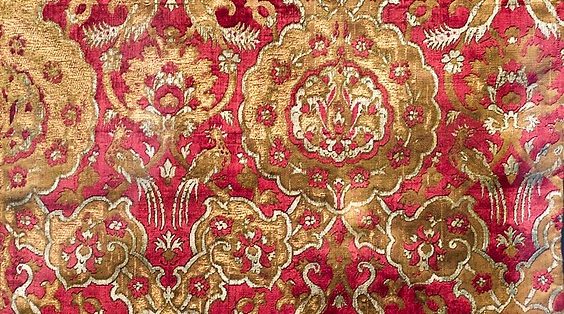
Velvet in the Renaissance
In the Renaissance, the popularity of the Silk Road saw the development of Velvet in Italy and Spain from the 12th to 18th Centuries. Improved technology during this time also allowed for the cheaper production of fabric. This newfound affordability ultimately resulted in increased (although still exclusive) distribution throughout Europe.
Although Florentine Velvet is particularly notable for the time (Florence was a main hub of culture and wealth during the Renaissance), there was stiff competition between the velvet manufacturers of multiple Italian cities (eg. Venice, Florence and Genoa). This resulted in the close guarding of production secrets: to the point that some top weavers were forbidden to leave their cities.
In terms of base material and appearance, Renaissance Velvets were more decadent than the fabrics of the Ancient East. For instance, sometimes the final product incorporated threads of gold and silver into the silk fibres. Patterns also adorned the velvet of this time – often consisting of cut and uncut pile (ciselé velvet). Colours were rich, dark and deep, such as royal purples, reds, and blues. Only the wealthiest clientele could afford such luxury – eg. the church / rich families wanting to display their coat of arms (see the Medici family).
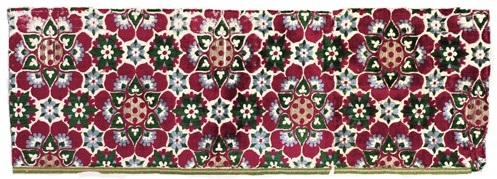
Modern Times
Velvet has become more widely produced since the industrial revolution, although it remained the height of luxury for the 18th, 19th and early 20th centuries. The textile characterises the glamour of the 1920s, in which velvet evening gowns and shawls were popular. This popularised the material among the lower classes in Western Society.
Finally, we can see in the late 70s, 80s and 90s the widespread production of the material; cementing its status as a staple in celebrity fashion of the time.
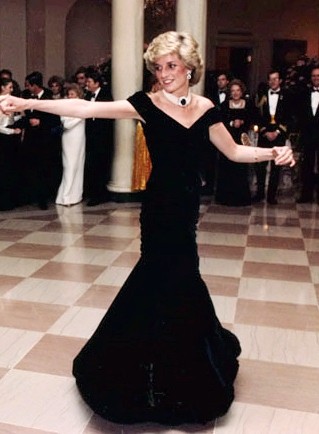
The White House, Nov 1985
Types of Velvet: A Compendium of Characteristics
- Brocade Velvet – This velvet has woven into it during the initial weaving process, resulting in raised pile and a woven ground.
- Chiffon Velvet – Lightweight velvet on a sheer base fabric (eg. silk, chiffon, georgette).
- Cisele – Velvet that consists of cut and uncut pile to create texture and pattern.
- Crushed – The pile of this velvet is pressed / twisted after being dampened; both with and against the nap. This technique creates texture and highlights in the fabric colour.
- Devore / Burnout – This method sees the use of caustic chemicals on velvet pile – which subsequently dissolves to produce a pattern.
- Embossed – This velvet is branded with a heat press, again resulting in a created pattern.
- Hammered – As its name would suggest, this type of velvet is hammered or semi-crushed, creating a beautiful dappled effect on the final product.
- Panné – Similar to crushed and hammered velvet – this velvet has its pile crushed in one direction with a heavy press.
- Pile-on-pile – A velvet with piles of various heights: the different heights then create a pattern.
- Silk – The “original” velvet with a beautiful drape and lustre. Known to be extremely difficult to work with and the most expensive type available.
- Viscose – aka. Rayon Velvet. Similar to silk in terms of amount of drape… but a lot easier to work with and cheaper in terms of production.
- Velveteen – An imitation velvet – generally made from cotton or a cotton-silk blend.

What is Velvet Made of? Fibres Used in the Manufacturing Process
NB. Most modern forms of velvet consist of different fibres for the base fabric and pile. This cuts down on production cost.
Natural Fibres
- Silk – Most modern “silk” velvet is actually a blend of silk and rayon. Pure silk velvet is rare and still extremely expensive; which may be why velvet still maintains an air of luxury even with mass production.
- Cotton – A very versatile type of velvet. Cotton velvet is easy to work with and used in many different garments, including more affordable styles.
- Mohair – This velvet is naturally resistant to dirt due to qualities of the fibre. This property makes it ideal for upholstery use.
- Linen – This velvet has soft pile but is heavy in terms of the overall fabric. The pile is also dense and slightly irregular, resulting in a vintage/rugged look. Velvet upholstery (curtains and furniture) often consists of this fibre.
- Wool – A heavily textured velvet (also used in upholstery) with a thick pile.
Synthetic Fibres
- Polyester/Blend – Velvet made from polyester or blended materials (eg. rayon, acetate, nylon and wool) is potentially in the most widespread form of the fabric. As blends often include at least one synthetic material, this kind of velvet is easy to work with, resistant to mould and mildew and has a medium pile. Often has a drape comparable to rayon velvet.
- Rayon/Viscose – See this velvet’s description in the previous section. Rayon/Viscose velvet is often used in affordable evening wear and gowns.
- Acetate – Another synthetic velvet, acetate velvet is affordable but easily damaged by moisture/pressure.
- Stretchy Velvet – A velvet blend with the addition of Lycra, elastane or a similar synthetic fibre with stretch; this gives the velvet a sexy, figure hugging look (depending on cut). Best used in garments.
Velour vs. Velvet: What’s the Difference?
Velour is a material similar-to-but-not-the-same-as Velvet, so the two fabrics can easily be confused. Invented in the 1800s in France, it also has a pile weave and is and made from cotton. Knitted instead of woven, velour is stretchier than Velvet, as the production process of the fabric (ie. the knit) produces larger, less taut holes than that of a weave. Velour is used for drapery, upholstery and sports wear, as the shorter pile and knitted weft make it more durable than its counterpart.
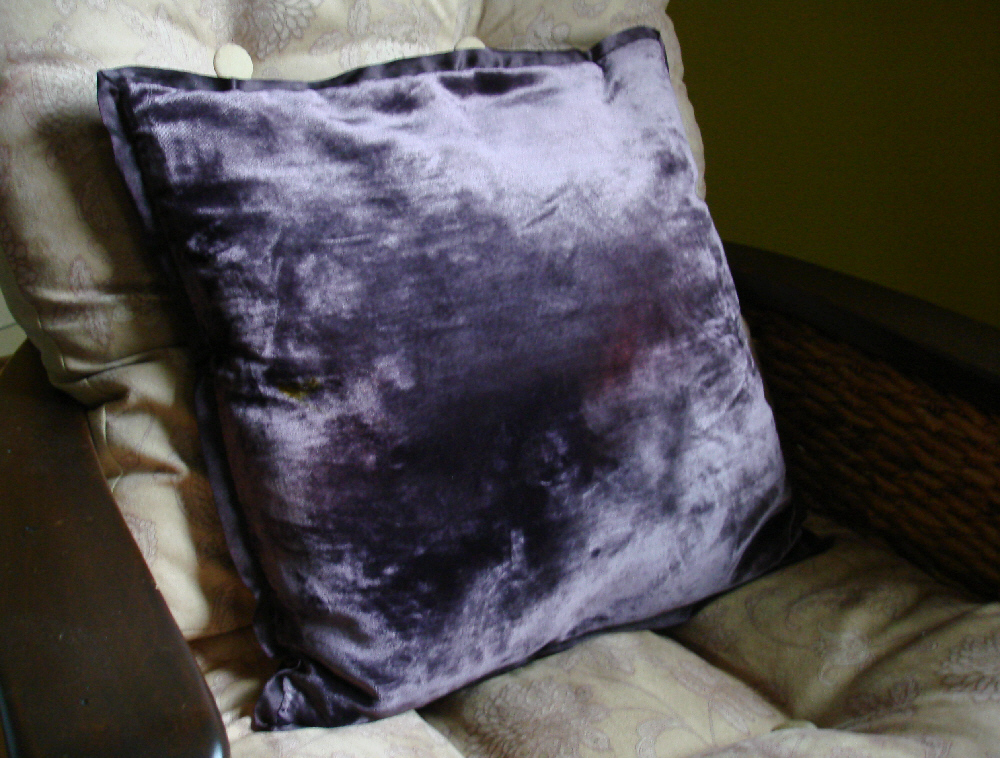
Intrigued? Inspired? Want to work with / wear more velvet? Check out our swatch packs: with 110+ types of fabric (five of which are velvet), we have the perfect material for everyone. Click the banner below:
